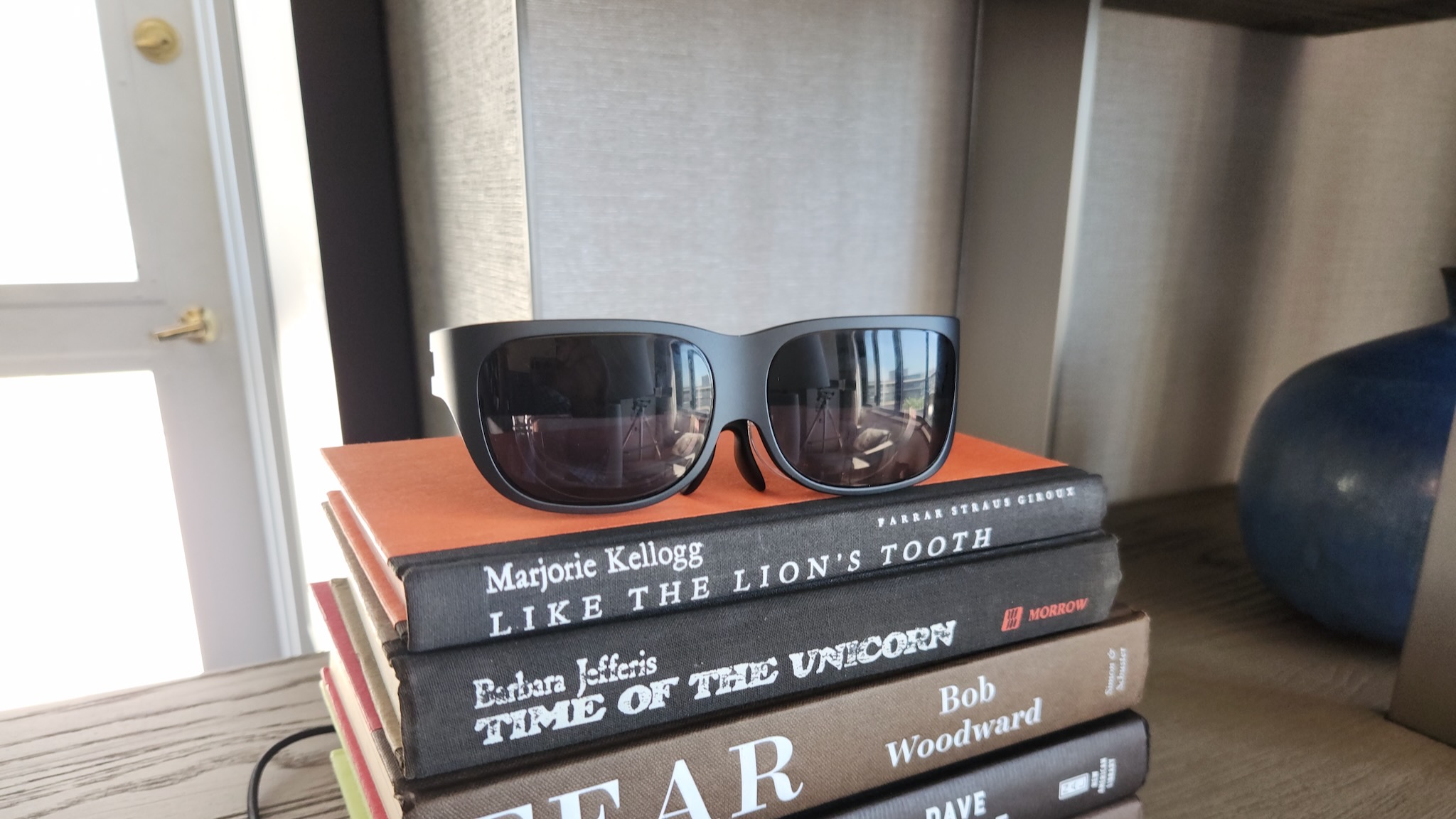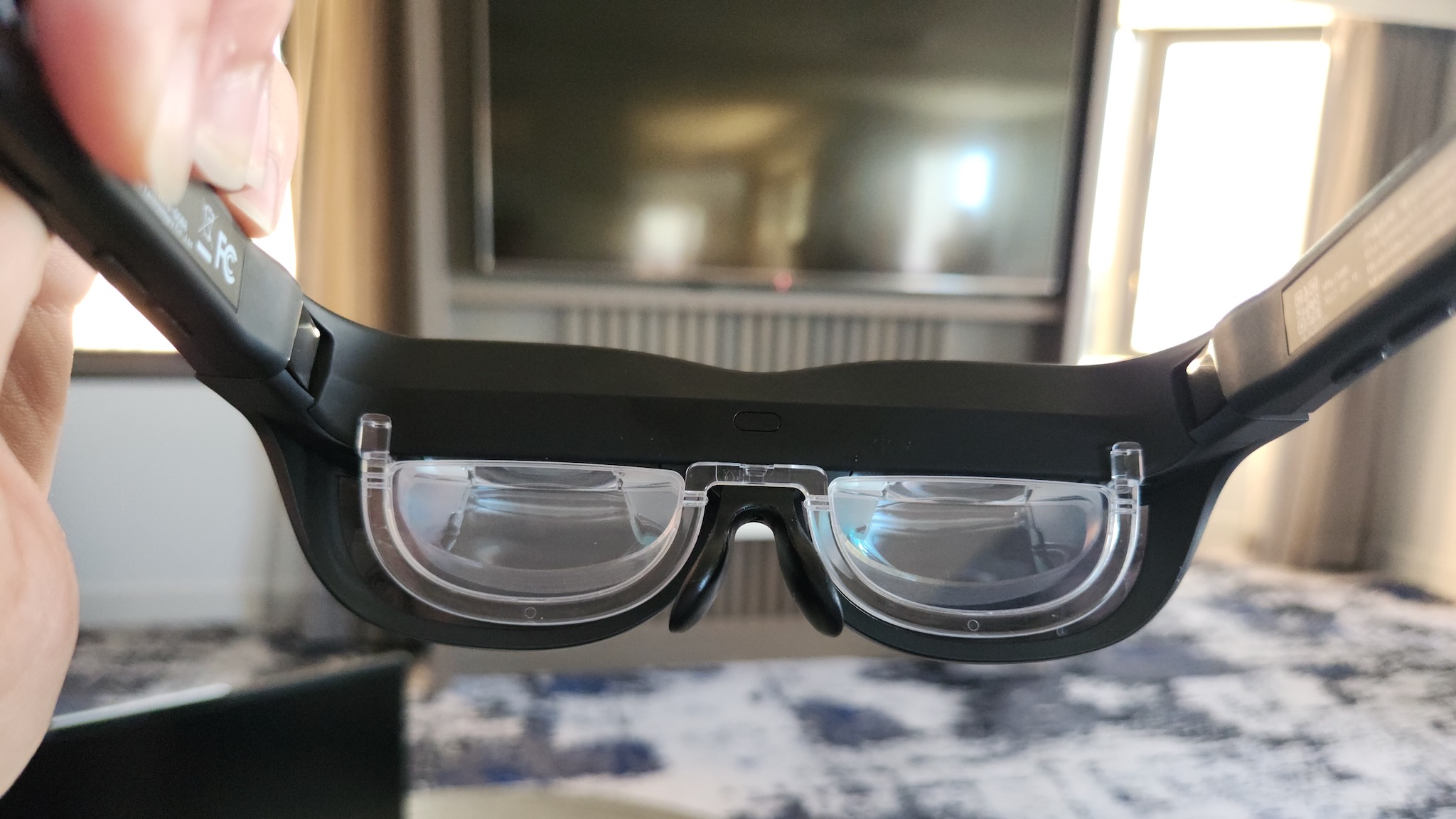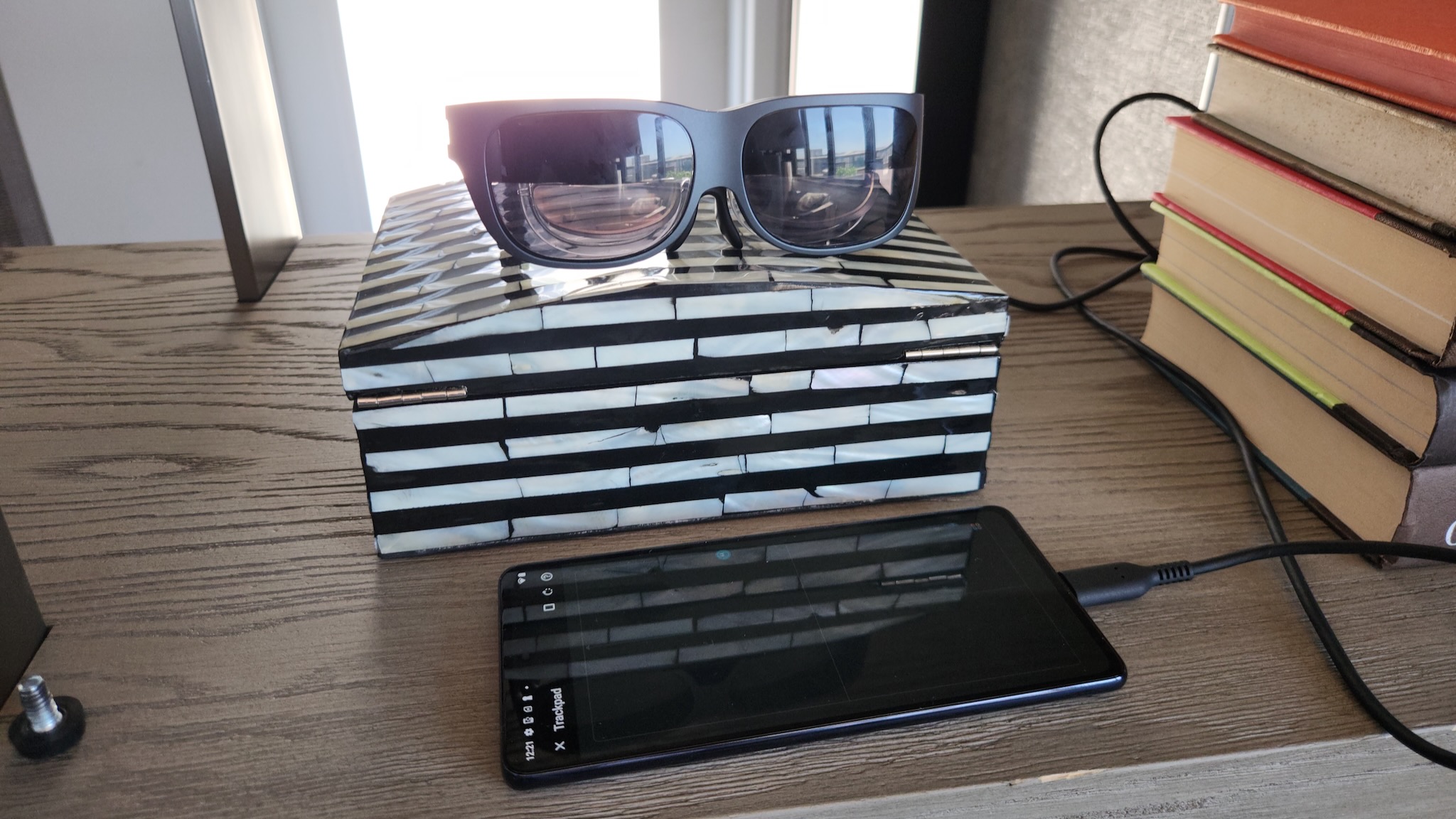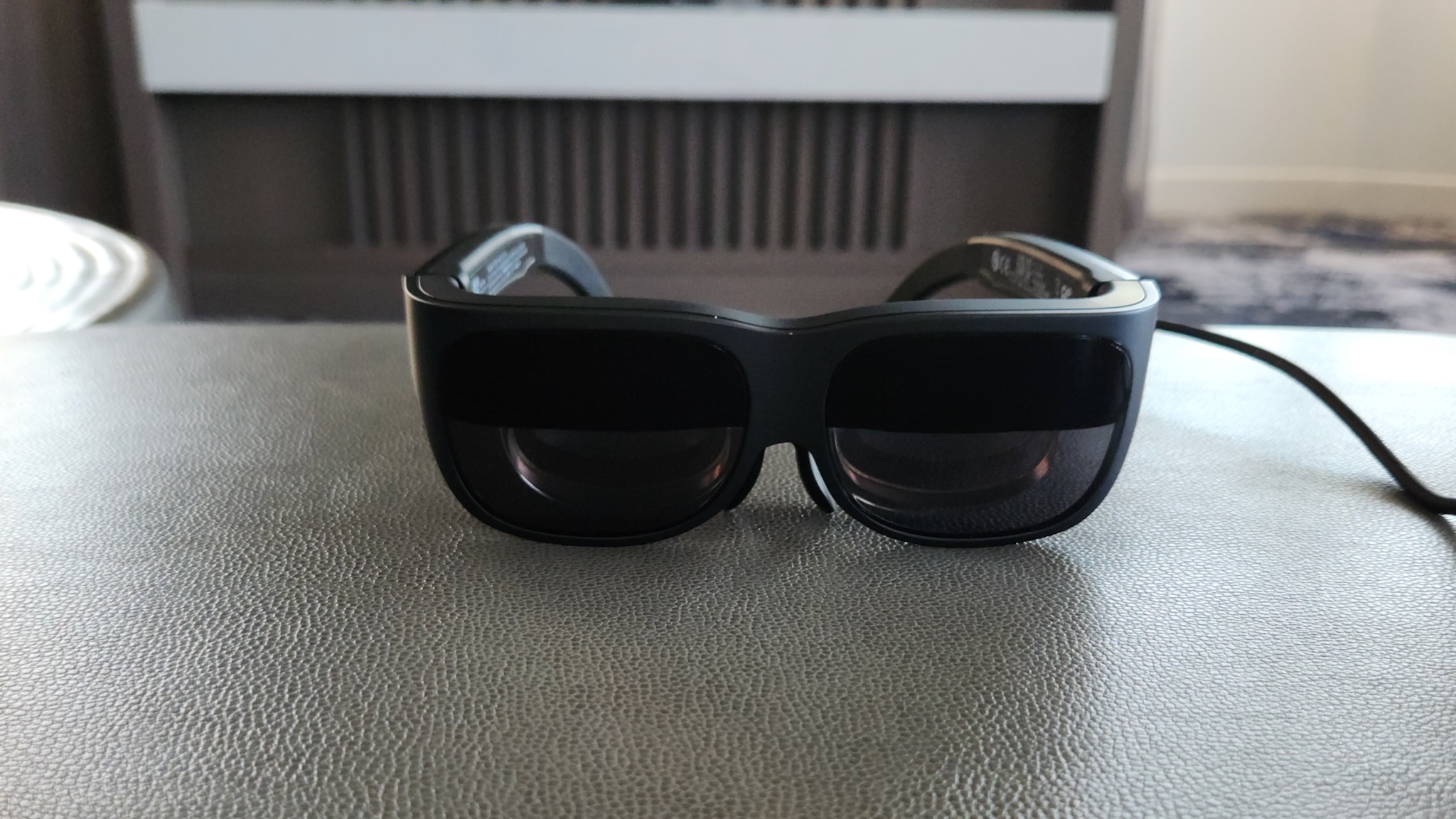Lenovo’s platform-agnostic AR glasses will make a virtual display for almost any device
I got the chance to try the Glasses T1, which will connect to Android, iOS, macOS, and Windows devices.

What you need to know
- The Lenovo Glasses T1 are a "wearable display" that connects vis USB-C to most mobile or computing devices, creating an extended display of that device.
- The AR glasses use micro-OLED display tech with 10,000:1 contrast ratio and can support 60Hz refresh rate for gaming or videos.
- They'll initially sell in China in late 2022 before coming to "other select markets in 2023," with a targeted price of "under $500."
Most AR glasses available today cost well over a grand, connect to a single type of device, and are marketed as enterprise devices — including Lenovo's own ThinkReality A3 glasses. But its new consumer Glasses T1 will buck that trend and make augmented reality more affordable and accessible.
Called the Lenovo Yoga Glasses in China, the Glasses T1 connects to Windows, macOS, and Android devices via their USB-C ports, or to iPhones with a USB-C to Lightning adapter. The connection will create a platform-agnostic virtual window extending from your device so you can see content blown up in the air in front of you.
The device leverages Motorola's "Ready For" technology, which lets you use your mobile phone as a controller for a desktop-like UI on larger screens. With the Glasses, you'll control the UI or play games with your device's touchscreen or trackpad.
Customizable to your needs, the Glasses T1 can insert prescription lenses and come with "swappable nose clips and adjustable temple arms."
I had the chance to briefly test the Lenovo Glasses T1 at a private showcase in San Francisco — where I also tested the new Lenovo Tab P11 tablets and 120Hz IdeaPad Chromebook.





I can't speak to how the micro-OLED display with 10,000:1 contrast ratio compares to other AR glasses because I haven't tried enough competing models yet, but the visual quality for a YouTube video of nature looked surprisingly high-quality floating in my field of view, and my Trackpad app commands manifested quickly on the Glasses themselves.
On the flipside, these AR glasses have the same issue as others I've tested, which is that the display portion of the screen is small enough that you have to orient your face a certain way to actually see the virtual content. Otherwise, it would impede your vision entirely, something no one wants. Using them takes some getting used to, in other words. But they're well suited for giving you a virtual monitor in any environment, a useful tool for someone who frequently travels or works away from home.
Get the latest news from Android Central, your trusted companion in the world of Android
If Lenovo truly plans to sell these Glasses for under $500, it feels like an excellent bargain.
For comparison, OPPO's Air Glass costs about $750 and only sells in China, other consumer AR devices like Nreal Light only work with Android phones, and prototypes from companies like Meta and Google are still years off. Even if Lenovo's glasses only reach a niche level of consumers, it's clear the company is making strides in the AR field while other brands have fallen behind.
The Lenovo Glasses T1 will first come to China in late 2022, then to "select markets" in 2023. I hope that includes the U.S., as I'd love to put them through their paces and compare them to the productivity-focused mixed reality Quest Pro arriving this year.

Michael is Android Central's resident expert on wearables and fitness. Before joining Android Central, he freelanced for years at Techradar, Wareable, Windows Central, and Digital Trends. Channeling his love of running, he established himself as an expert on fitness watches, testing and reviewing models from Garmin, Fitbit, Samsung, Apple, COROS, Polar, Amazfit, Suunto, and more.
